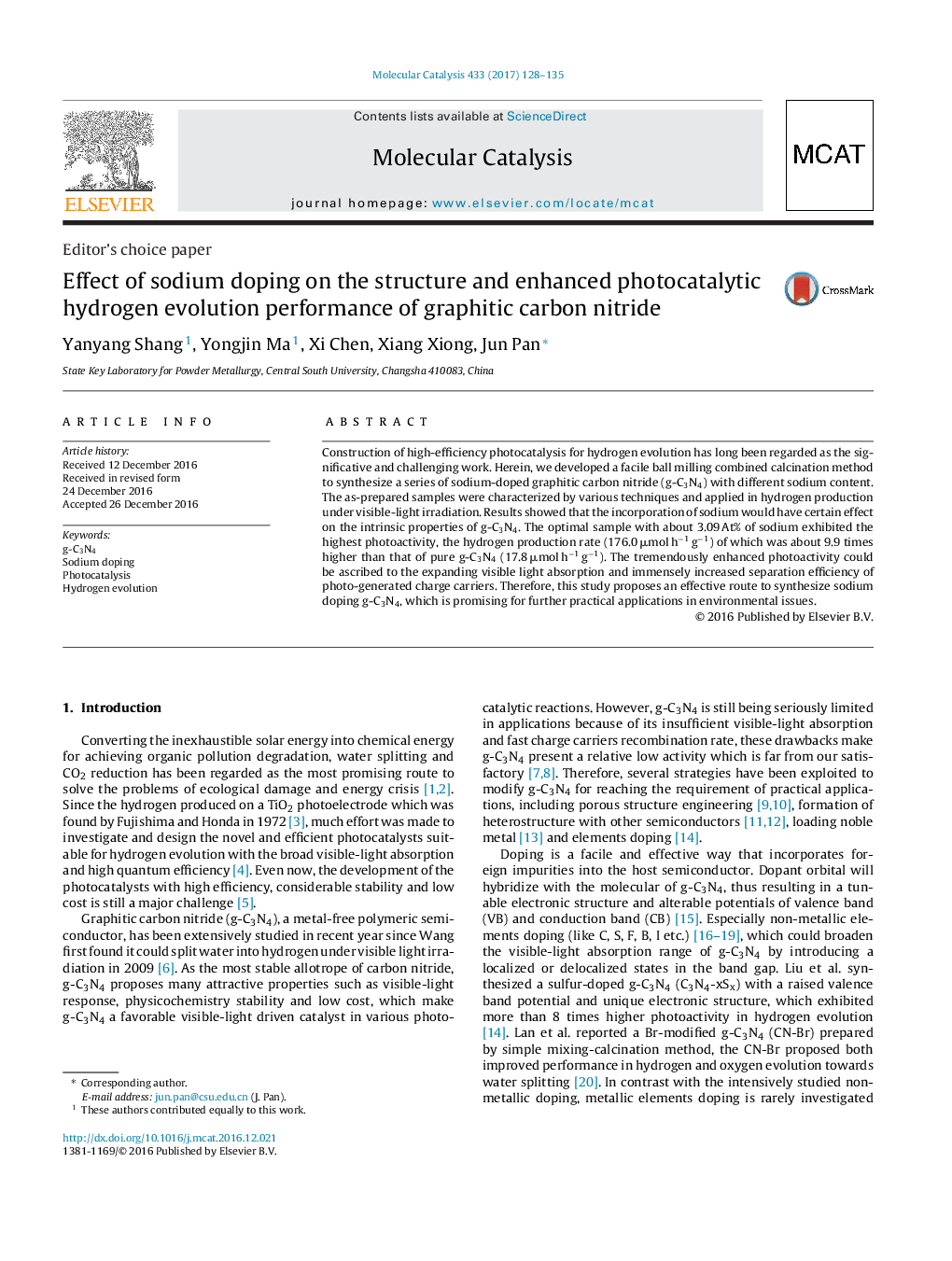| Article ID | Journal | Published Year | Pages | File Type |
|---|---|---|---|---|
| 6448842 | Molecular Catalysis | 2017 | 8 Pages |
â¢Sodium-doped g-C3N4 was synthesized via simple ball milling-calcination method.â¢Incorporation of sodium could moderate the morphology, structural, optical and electrochemical properties of g-C3N4.â¢Sodium-doped g-C3N4 exhibited remarkably enhanced photocatalytic H2 evolution activity under visible-light irradiation.â¢The excellent photoactivity was mainly attributed to the high-efficiency separation of the photo-generated electron-hole pairs.
Construction of high-efficiency photocatalysis for hydrogen evolution has long been regarded as the significative and challenging work. Herein, we developed a facile ball milling combined calcination method to synthesize a series of sodium-doped graphitic carbon nitride (g-C3N4) with different sodium content. The as-prepared samples were characterized by various techniques and applied in hydrogen production under visible-light irradiation. Results showed that the incorporation of sodium would have certain effect on the intrinsic properties of g-C3N4. The optimal sample with about 3.09 At% of sodium exhibited the highest photoactivity, the hydrogen production rate (176.0 μmol hâ1 gâ1) of which was about 9.9 times higher than that of pure g-C3N4 (17.8 μmol hâ1 gâ1). The tremendously enhanced photoactivity could be ascribed to the expanding visible light absorption and immensely increased separation efficiency of photo-generated charge carriers. Therefore, this study proposes an effective route to synthesize sodium doping g-C3N4, which is promising for further practical applications in environmental issues.
Graphical abstractDownload full-size image
